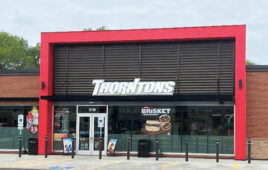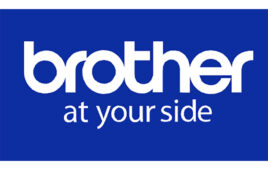 The reasons why the U.S. Hispanic community increasingly matters to c-stores’ marketing plans are becoming more varied, and important.
The reasons why the U.S. Hispanic community increasingly matters to c-stores’ marketing plans are becoming more varied, and important.
By Sylvia Klinger and Tania Melendez, Contributing Editors
In a country that has been shaped by the cultures of many different lands, it should come as no surprise that the many changes occurring in convenience stores have been greatly influenced by the demands emerging from this melting pot.
U.S. Hispanics, who comprise 55.4 million of the nation’s 318.9 million residents, increasingly are recognized as a viable and growing market segment for the convenience store channel.
The reasons are numerous.
The Hispanic population continues to grow, expanding its buying power and social impact. According to the U.S. Census Bureau, Hispanics make up 17% of the entire U.S. population. However, if the projected rate of growth stays on course, that percentage rate would surpass 25% by 2060.
Consider that the U.S. Hispanic population has already outnumbered whites in California since 2014. With this in mind, it’s important that c-stores be even more proactive in creating marketing plans that meet the needs of Hispanics consumers.
SETTING TRENDS
Like America’s growing population of younger adults, Hispanic Millennials are growing in force, which allows them the advantage to set new social trends and wield considerable consumer clout. More than ever, younger U.S. Hispanics have the opportunity to partake in higher education, which involves parting from the nuclear family circle—allowing them to make their own choices regarding food and personal convenience.
Hispanic Millennials also are more involved in sustainable living programs, which also give them the opportunity of setting influential footprints in their communities.
Arguably, the U.S. Hispanic hasn’t assimilated in this country as much as other ethnicities; they are actually merging their cultural heritage and values with that of mainstream America, while increasingly becoming less responsive to “one size fits all” market strategies.
U.S. Hispanics understand that their heritage is vital to their identity and it’s equally important to integrate their own cultural values, customs, traditions and ideas with those they adopt from the U.S. With this in mind, convenience stores should seek to integrate their products with the same variety and diversity found within the Hispanic community.
GETTING CONNECTED
The U.S. Hispanic is taking advantage of and embracing the digital world at higher rates and in different ways than the general market. U.S. Hispanics are finding a personal connection with social media allowing them to network without having to sacrifice their ideals, social concerns, hobbies or culture.
By staying connected, Hispanic consumers are able to access an almost limitless and boundary-free terrain that motivates them to become even more involved in the unstoppable trends of society.
BUYING POWER
According to Nielsen data from 2014, the U.S. Hispanic has $1.5 trillion purchasing power, which is estimated to reach $1.7 trillion by 2019. Their grocery spending grew 22% between 2010-2015 and is expected to reach $95.9 billion by 2020, which are astounding numbers to consider and ponder when projecting category sales and creating related marketing plans.
Such statements lead us to believe then, that U.S. Hispanics are highly involved consumers, one reason being that they are integrating both their own cultural customs and other cultures that are prevalent in the U.S. In addition, Hispanics have strong family bonds, which motivates them to provide all of the necessities for their family, whether it’s convenience products or grocery items.
Such aspiration is due in part to the continuous connection to their culture, and the awareness of the fast changes in their communities, whether it’s fashion, media, nutrition, politics or products of convenience.
In summary, being able to provide the right products to the U.S. Hispanic population begins by asking the right questions, including: What is important to them? What are their needs? Do I appreciate their values? Can I meet their wants?
Although the answers can vary from region to region, the basics for asking the questions remain the same. U.S. Hispanics are creative and they require their products to be as innovative as they are. They are connected to their world and thus aspire to have the convenience and feasibility of remaining linked to their values. In a sense, Hispanic consumers are a fusion of unique ideas and customs. They are influential and they are loyal to what they care about most.
The U.S. Hispanic population has a lot to offer the marketplace, but only if the market has something of value to offer to them in return. In other words, it’s not what the U.S. Hispanic population can do for your business, but instead, what you can do for them.




